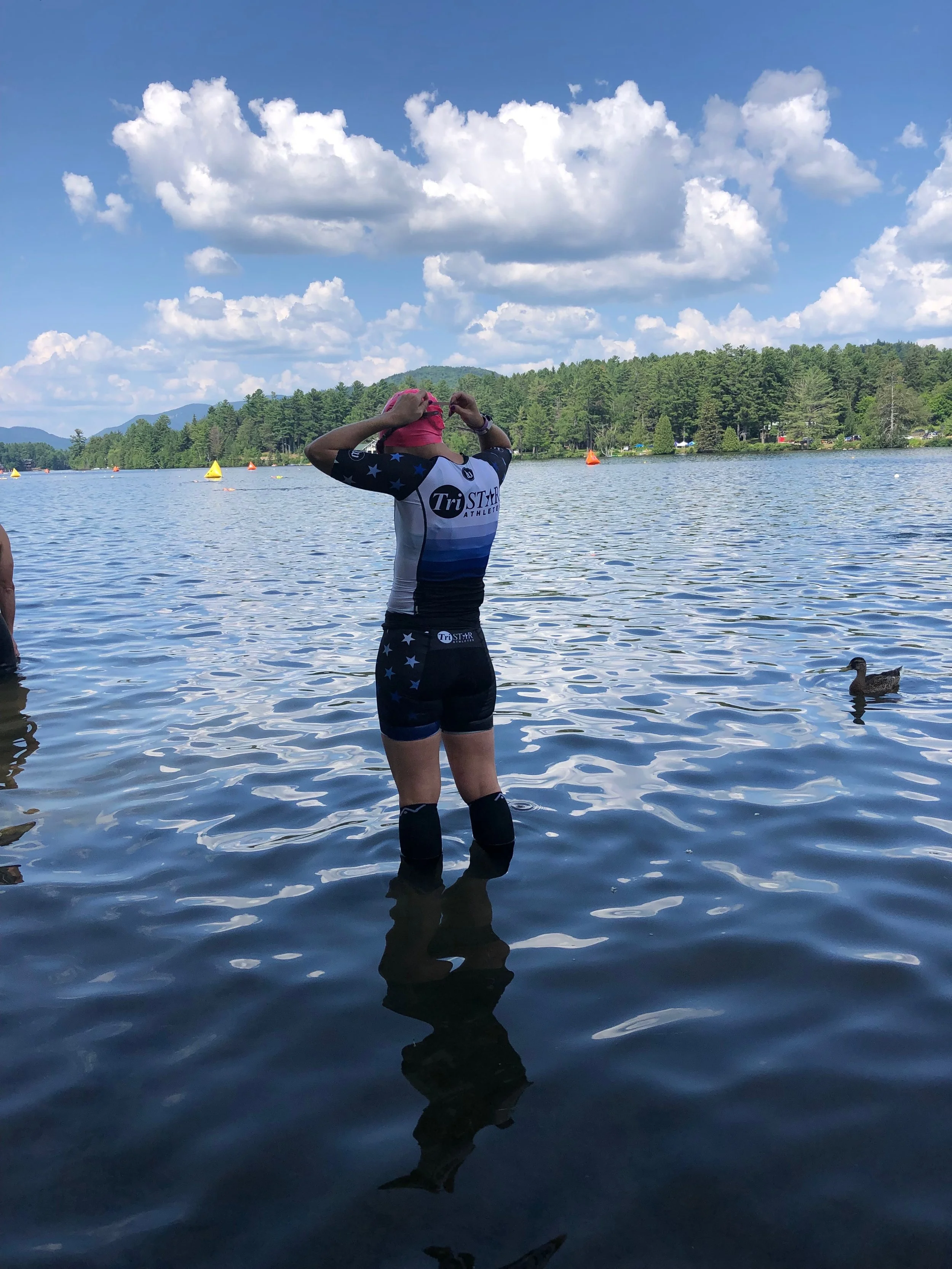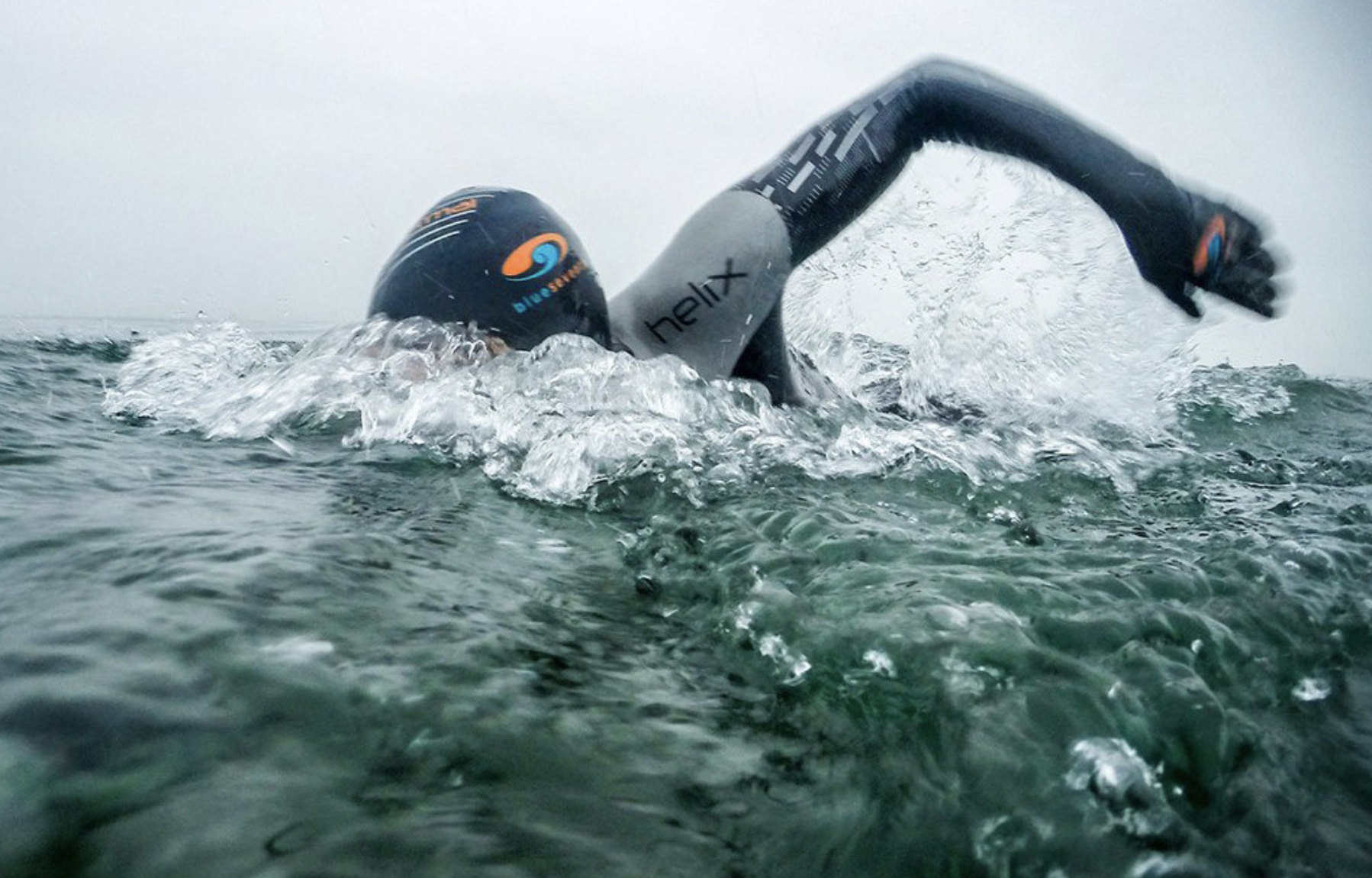Overview
What is swim cadence? This is the frequency of which your arms are rotating / propelling in the water. (rpm, revolutions per minute.) Cadence can range from very low of 13rpm to very high 40rpm.
Swimming also can be measured by your Garmin or other smart swim device as a SWOLF score. (Note that training peaks currently does not report a SWOLF score though it does record RPM) We will cover both swim cadence metrics below.
Why should you care? Cadence can help improve your speed potential and economy at all levels of swimming. In general, lower is better creating less drag, less work and more speed with a proper stroke rate.
Swimming RPM
Typical cadence is 25-30rpm, low would be considered <20rpm and high anything greater than 30rpm.
Beginner swimmers will struggle to be <30rpm and faster swimmers with higher thresholds and better form will be closer to 30rpm.
Swim drills such as single arm drill , press the button drill, and “thumb scrape” drill can help to improve a lower cadence in the water. (For the top swim drills and videos please follow here)
Working towards low cadence In the pool try counting off your strokes per length and trying to reduce them. Each trip you should see if you can go one RPM lower… and repeat. This equates to a more economical output in the water.
“Is there such a thing as too low of a cadence?” Yes, but only if the athlete is “falling out of the water”. Meaning, there stroke rate is low enough that they begin to sink.
Using your watch / Garmin you can set a minimum strikes per minute to alert when you dip below 180spm. Our coaches have found runners with lower cadence can learn to imprint run form when on the treadmill and looking at their spm. This allows the athlete to focus on the number and make changes to their gait to improve their cadence numbers.
Form and Cadence; We encourage beginner and intermediate swimming levels to start off with drill work in the water first that focuses in on lower cadences. This encourages good technique throughout the main set of the swim.
High cadence; signifies that the athlete is working much harder and will likely have form as a limiter in swimming. The higher the cadence the more breathing that is required and not to mention arm strokes to accomplish the same distance with a lower cadence.
Open water cadence; At times athletes may find a higher stroke rate more beneficial in open water where there is wave action. (Although more rare form must still be considered)
Cadence and the arm stroke rate; In swimming one arm should power the stroke at all times. This means not having two arms controlling the water…. If you find you are using two arms at once to power the stroke, your stroke rate will be higher.
Faster Swimmers and cadence; When watching a “faster swimmer” their arms above the water move very slowly at a low cadence and turnover…. beneath the water these swimmers are pulling very hard and rapidly. Therefore, within the stroke cycle itself should be a slow and fast adaptation. Tristar Athletes should practice controlling and limiting their arm speed above water and below to achieve a desired low cadence.
Swim SWOLF Score
The most easily obtainable and somewhat interesting metric reported is the SWOLF score. SWOLF is an abbreviation for “Swim Golf” , and is a score obtained by adding together your strokes per length, and the time for the length.
e.g. 25 yards swim at 30 seconds in 20 strokes is a SWOLF score of 50.
What does my SWOLF score tell me?
Athletes are judged equally on time. If you want to set a new world record in the 1500 meter freestyle, you need to do so in a shorter amount of time than the current record holder. Your SWOLF score is different because it’s a personal metric….
Taller people with long arms tend to have lower SWOLF scores, because their larger bodies traverse the length of pools more readily. This doesn’t mean that they’re faster and more efficient swimmers, it just means that the benchmark for their personal SWOLF score may be different than a shorter athlete. Your best SWOLF score gives you a personally-tailored target to shoot for the next time you're training in the pool.
If your score is in the mid or upper 30’s, you are a pretty stellar swimmer. For example, if it took you 19 seconds to swim the length of a 25 meter pool, and you took 16 strokes, that would be a SWOLF score of 35. That’s a great SWOLF score for a 25m pool. A good score would be a little higher than that, in the low 40’s.
Remember... this a training drill, not an exact science. Different body types and effort levels can result in varying and potentially contradictory SWOLF scores. This is a tool you can use to improve as a swimmer — not a number that determines your worth as an athlete.










When it comes to the swim, things look a bit different when it comes to TSS. How so? You may have noticed that certain swims award you a lot of TSS points while other swims may not. There are several factors we highlight here for you to consider to maintain TSS accuracy in your swimming.